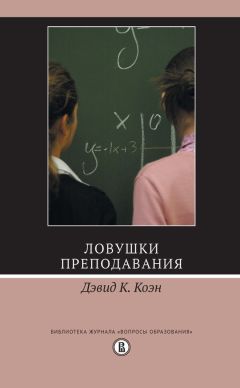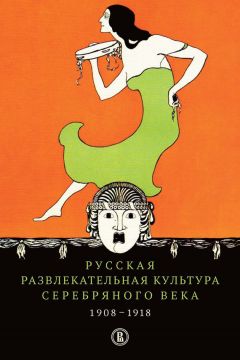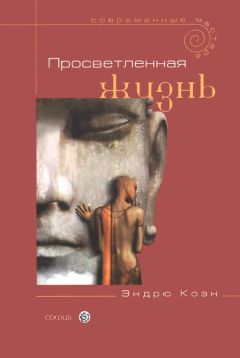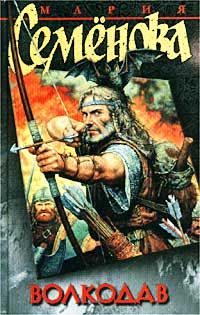Николас Уэйд - На заре человечества: Неизвестная история наших предков
275
Там же, с. 299.
276
Marek Zvelebil, «Demography and Dispersal of Early Farming Populations at the Mesolithic-Neolithic Transition: Linguistic and Genetic Implications,» in Peter Bellwood and Colin Renfrew, ed., Examining the Farming/Language Dispersal Hypothesis, McDonald Institute for Archaeological Research, 2002, p. 381.
277
Colin Renfrew, April McMahon, and Larry Trask, eds., Time Depth in Historical Linguistics, McDonald Institute for Archaeological Research, 2000.
278
Bill J. Darden, «On the Question of the Anatolian Origin of Indo-Hittite,» in Great Anatolia and the Indo-Hittite Language Family, Journal of Indo-European Studies Monograph No. 38, Institute for the Study of Man, 2001.
279
Mark Pagel, «Maximum-Likelihood Methods for Glottochronology and for Reconstructing Linguistic Phylogenies,» in Colin Renfrew, April McMahon, and Larry Trask, eds., Time Depth in Historical Linguistics, McDonald Institute for Archaeological Research, 2000, p. 198.
280
K. Bergsland and H. Vogt, «On the Validity of Glottochronology,» Current Anthropology 3:115–153 (1962).
281
Russell D. Gray and Quentin D. Atkinson, «Language-Tree Divergence Times Support the Anatolian Theory of Indo-European Origin,» Nature 426:435–439 (2003).
282
Peter Forster and Alfred Toth, «Toward a Phylogenetic Chronology of Ancient Gaulish, Celtic and Indo European,» Proceedings of the National Academy of Sciences 100:9079–9084 (2003).
283
Bernd Heine and Derek Nurse, eds., African Languages, Cambridge University Press 2000, p. 1.
284
Christopher Ehret, «Language and History,» in Bernd Heine and Derek Nurse, eds., African Languages, Cambridge University Press, 2000, pp. 272–298; «Testing the Expectations of Glottochronology against the Correlations of Language and Archaeology in Africa,» in Colin Renfrew, April McMahon, and Larry Trask, eds., Time Depth in Historical Linguistics, McDonald Institute for Archaeological Research 2000 pp. 373–401.
285
Richard J. Hayward, «Afroasiatic,» in Bernd Heine and Derek Nurse, eds., African Languages, Cambridge University Press, 2000, pp. 79–98.
286
Christopher Ehret, «Language and History,» in Bernd Heine and Derek Nurse, eds., African Languages, Cambridge University Press, 2000, p. 290.
287
Nicholas Wade, «Joseph Greenberg, 85, Singular Linguist, Dies,» New York Times May 15, 2001, p. A23.
288
Joseph H. Greenberg, «Language in the Americas,» Stanford University Press, 1987.
289
L. Luca Cavalli-Sforza, Paolo Menozzi, and Alberto Piazza, The History and Geography of Human Genes, Princeton University Press, 1994, pp. 317, 96.
290
Там же, с. 99.
291
L. L. Cavalli-Sforza, Eric Minch, and J. L. Mountain, «Coevolution of Genes and Languages Revisited,» Proceedings of the National Academy of Sciences 89:5620–5624 (1992).
292
M. Lionel Bender, in Bernd Heine and Derek Nurse, eds., African Languages, Cambridge University Press, 2000, p. 54.
293
Пример взят из Lyle Campbell, Historical Linguistics, MIT Press 1999 p. 111.
294
Richard Hayward, in Bernd Heine and Derek Nurse, eds., African Languages, Cam bridge University Press, 2000, p. 86.
295
Nicholas Wade, «Scientist at Work: Joseph H. Greenberg; What We All Spoke When the World Was Young,» New York Times, February 1, 2000, p. F1.
296
Joseph H. Greenberg, Indo-European and Its Closest Relatives, Volume 1: Grammar, Stanford University Press, 2000, p. 217.
297
Joseph H. Greenberg, Indo-European and Its Closest Relatives, Volume 2: Lexicon, Stanford University Press, 2002.
298
Там же, с. 2.
299
Nicholas Wade, «Joseph Greenberg, 85, Singular Linguist, Dies,» New York Times, May 15, 2001, p. A23; Harold C. Fleming, «Joseph Harold Greenberg: A Tribute and an Appraisal,» Mother Tongue: The Journal VI: 9–27 (2000–2001).
300
Johanna Nichols, «Modeling Ancient Population Structures and Movement in Linguistics,» Annual Review of Anthropology, 26:359–384 (1979).
301
Mark Pagel, «Maximum-Likelihood Methods for Glottochronology and for Reconstructing Linguistic Phylogenies.»
302
Merritt Ruhlen, The Origin of Language, Wiley, 1994, p. 115.
303
Tatiana Zerjal et al., «The Genetic Legacy of the Mongols,» American Journal of Hu man Genetics 72:717–721 (2003).
304
Ala-ad-Din 'Ata-Malik Juvaini, The History of the World Conqueror, trans. J. A. Boyle, Manchester University Press, 1958, vol. 2, p. 594.
305
Nicholas Wade, «A Prolifi c Genghis Khan, It Seems, Helped People the World,» New York Times, February 11, 2003, p. F3.
306
Yali Xue et al., «Recent Spread of a Y-Chromosomal Lineage in Northern China and Mongolia,» American Journal of Human Genetics, 77:1112–1116 (2005).
307
В северо-западной Ирландии целых 20 % мужчин обладают особенным набором мутаций в Y-хромосоме, известным как ирландский модальный гаплотип. Фамилии у многих из них восходят к Уи Нейллам, группе династий верховных королей Ирландии, правивших северо-западом и другими областями страны приблизительно с 600 по 900 г. Имя Уи Нейлл переводится как «потомки Ниалла». Историки были склонны считать их политическим образованием, а патриарха Ниалла Девять Заложников – легендарной фигурой. Генетическое исследование дает четкие доказательства того, что Ниалл Девять Заложников существовал в действительности: это открытие столь же поразительное, как если бы легенды о короле Артуре оказались исторической правдой. Ирландский модальный гаплотип, ярлык потомков Ниалла, чаще всего встречается в северо-западной Ирландии, но кроме того – в ирландской диаспоре: им обладают не менее 1 % жителей Нью-Йорка европейского происхождения. Очевидно, не стоит воспринимать слишком скептически слова ирландцев, когда они говорят, что в их жилах течет королевская кровь. Laoise T. Moore et al., «A Y-Chromosome Signature of Hegemony in Gaelic Ireland,» American Journal of Human Genetics 78:334–338 (2006).
308
George Redmonds, interview, April 5, 2000.
309
Bryan Sykes, Adam's Curse, W. W. Norton, 2004, p. 7.
310
Bryan Sykes and Catherine Irven, «Surnames and the Y Chromosome,» American Journal of Human Genetics 66:1417–1419 (2000).
311
Nicholas Wade, «If Biology Is Ancestry, Are These People Related?» New York Times, April 9, 2000, Section 4, p. 4.
312
Bryan Sykes, Adam's Curse, p. 18.
313
Cristian Capelli et al., «A Y Chromosome Census of the British Isles,» Current Biology 13:979–984 (2003).
314
Emmeline W. Hill, Mark A. Jobling, and Daniel G. Bradley, «Y-chromosome Variation and Irish Origins,» Nature 404: 351 (2000); Nicholas Wade, «Researchers Trace Roots of Irish and Wind Up in Spain,» New York Times, March 23, 2000, p. A13; Nicholas Wade, «Y Chromosomes Sketch New Outline of British History,» New York Times, May 27, 2003, p. F2.
315
James F. Wilson et al., «Genetic Evidence for Different Male and Female Roles During Cultural Transitions in the British Isles,» Proceedings of the National Academy of Science 98:5078–5083 (2001).
316
Norman Davies, The Isles, Oxford University Press, 1999, p. 3.
317
Benedikt Hallgrimsson et al, «Composition of the Founding Population of Iceland: Biological Distance and Morphological Variation in Early Historic Atlantic Europe,» American Journal of Physical Anthropology 124:257–274 (2004).
318
Agnar Helgason et al., «Estimating Scandinavian and Gaelic Ancestry in the Male Settlers of Iceland,» American Journal of Human Genetics 67:697–717 (2000).
319
Agnar Helgason et al., «mtDNA and the Origin of the Icelanders: Deciphering Signals of Recent Population History,» American Journal of Human Genetics 66:999–1016 (2000).
320
Benedikt Hallgrimsson et al., «Composition of the Founding Population of Iceland.»
321
Nicholas Wade, «A Genomic Treasure Hunt May Be Striking Gold,» New York Times, June 18, 2002, p. F1.
322
Agnar Helgason et al., «A Population-wide Coalescent Analysis of Icelandic Matrilineal and Patrilineal Genealogies: Evidence for a Faster Evolutionary Rate of mtDNA Lineages than Y Chromosomes,» American Journal of Human Genetics 72:1370–1388 (2003).
323
M. F. Hammer et al, "Jewish and Middle Eastern Non-Jewish Populations Share a Common Pool of Y-chromosome Biallelic Haplotypes, "Proceedings of the National Academy of Sciences 97:6769–6774 (2000).
324
Mark G. Thomas et al., «Founding Mothers of Jewish Communities: Geographically Separated Jewish Groups Were Independently Founded by Very Few Female Ancestors,» American Journal of Human Genetics 70:1411–1420 (2002).
325
Harry Ostrer, «A Genetic Profile of Contemporary Jewish Populations,» Nature Review Genetics 2:891–898 (2001).
326
Shaye J. D. Cohen, The Beginnings of Jewishness, University of California Press, 1999, p. 303.
327
Denise Grady, «Father Doesn't Always Know Best,» New York Times, July 7, 1988, Section 4, p. 4.
328
Yaakov Kleiman, «The DNA Chain of Tradition,» www.cohen-levi.org.
329
Karl Skorecki et al., «Y Chromosomes of Jewish Priests,» Nature 385:32 (1997).
330
Israel Finkelstein and Neil Asher Silberman, The Bible Unearthed, Free Press, 2001, p. 98.
331
Mark G. Thomas et al., «Origins of Old Testament Priests,» Nature 394:138–139 (1998).
332
James S. Boster, Richard R. Hudson, and Steven J. C. Gaulin, «High Paternity Certain ties of Jewish Priests,» American Anthropologist 111 (4):967–971 (1999).
333
Doron M. Behar et al., «Multiple Origins of Ashkenazi Levites: Y Chromosome Evidence for Both Near Eastern and European Ancestries,» American Journal of Human Genetics 73:768–779 (2003).
334
Nicholas Wade, «Geneticists Report Finding Central Asian Link to Levites,» New York Times, September 27, 2003, p. A2.
335
Harry Ostrer, «A Genetic Profile of Contemporary Jewish Populations,» 336. Jared M. Diamond, «Jewish Lysosomes,» Nature 368:291–292 (1994).
336
Neil Risch et al., «Geographic Distribution of Disease Mutations in the Ashkenazi Jewish Population Supports Genetic Drift over Selection,» American Journal of Human Genetics 72:812–822 (2003).
337
Montgomery Slatkin, «A Population-Genetic Test of Founder Effects and Implications for Ashkenazi Jewish Diseases,» American Journal of Human Genetics 75:282–293 (2004).
338
Gregory Cochran, Jason Hardy, and Henry Harpending, «Natural History of Ashkenazi Intelligence,» Journal of Biosocial Science, in press (2005).
339
Melvin Konner, Unsettled: An Anthropology of the Jews, Viking Compass, 2003, p. 198.
340
Merrill D. Peterson, The Jefferson Image in the American Mind, Oxford University Press, 1960, p. 187.
341
Joseph J. Ellis, American Sphinx: The Character of Thomas Jefferson, Knopf, 1997.
342
Annette Gordon-Reed, Thomas Jefferson and Sally Hemings: An American Controversy, University of Virginia Press, 1997, p. 224.




